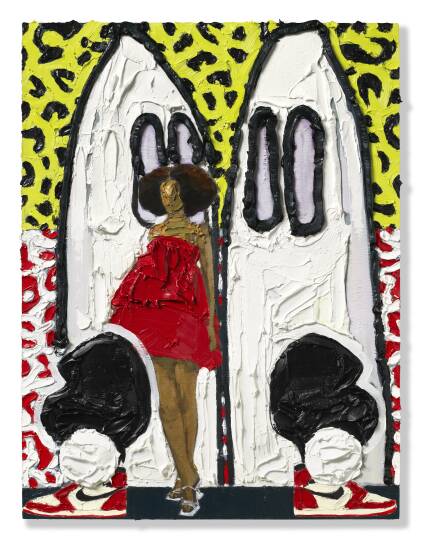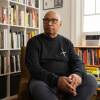GBH Executive Arts Editor Jared Bowen returns to Boston Public Radio to share his weekly roundup of arts news. This week, find out about local, national and international arts and culture happenings, from a historic museum exhibit to how new laws could affect the performing arts.
"Vermeer"
On view at the Rijksmuseum, Amsterdam, Netherlands, through June 4
Johannes Vermeer is perhaps best known for his 1665 painting “Girl with the Pearl Earring.” A new exhibit in the Netherlands is bringing together the largest assemblage of the artist’s work: 28 out of 37 known paintings. The exhibit was a feat of collaboration between museums across the world: the Frick Collection in New York lent three Vermeers from its permanent collection for the first time in a century; while some other museums refused to lend their pieces, claiming concerns about the art’s fragility.
“Seeing one Vermeer painting is just huge,” says Bowen, noting the intricacy and detail of the artist’s still life work. He said this collection showing dozens of Vermeer's intricate works makes for “an extraordinary moment at the Rijksmuseum.”
While the Vermeer show in Amsterdam sold out quickly, Bowen pointed out that American art enthusiasts are lucky enough to have several Vermeer paintings on display in museums across the country, including the Frick, The Met, and the National Museum in Washington, D.C.
Tennessee drag ban
Recent legislation in Tennessee has made national headlines for its intentionally vague language seemingly targeting drag performances in the state. The law, which goes into effect July 1, is “trying to ban adult-oriented performances harmful to minors,” as Bowen described, specifically banning gender nonconformity within 1,000 feet of schools, public parks and places of worship.
However, the limits of what is considered “harmful to minors” are ill-defined. Questions surrounding Halloween immediately arise: Will the law lead to the arrest of fathers and sons dressing as princesses for the holiday? Another major issue is in the performance of popular media. As Bowen points out, “You can’t present Shakespeare in the park because there is so much cross-dressing in Shakespeare, as it was called in the day.” Household names like "The Lion King," "The Nutcracker," and "Hairspray" would also be in violation of the law. Even productions with ties to Massachusetts, like “1776,” which premiered at the American Repertory Theater in Cambridge, could be affected, as the entire cast are women and non-binary actors playing men on stage.
"Hear Me Now: The Black Potters of Old Edgefield, South Carolina"
On view at the Museum of Fine Arts through July 9
South Carolina has a long and storied tradition of Black potters, all the way back to pottery made by enslaved people. This show at Museum of Fine Arts, Boston traces that history, shown “through the prism” of 19th-century enslaved potter Dave, later recognized as David Drake. In addition to being a potter, Drake was also a poet who learned to read and write despite it being illegal for him at the time to do so. Drake’s pottery often featured his signature and poetry he had written, including one heart-wrenching poem inscribed in a piece describing his sense of loss after his wife and children were sold into slavery in Louisiana.
The MFA strives to name as many artists as possible within the exhibit “so that you see that they live on and their artistic legacy lives on,” but, as Bowen elaborates, “they also make a point in the labels where they can’t identify them as saying ‘This was made by an enslaved person and their history has been lost.’”
The legacy of the craft is carried on in the featured contemporary Black potters, such as Simone Leigh, who is also about to be featured in “a huge show of her work at the ICA.”

"María Berrío: The Children's Crusade"
On view at the ICA Boston through Aug. 6
Born in Colombia and working out of New York, María Berrío was inspired by the Children’s Crusade of 1212 to create a series of works looking at the experience of immigrant children under the Trump administration. Berrío combines collage and painting techniques to create evocative images of children experiencing migration, detention and family separation.
“You start to look at these images of children asleep and what must be going on in their mind,” Bowen describes. “Are they just drifting off to sleep? Is it calm for them? Or is there kind of terror happening in their minds, knowing the circumstances?”
One of the featured works was inspired by Berrío’s experience visiting the Boston Common and seeing the carousel there; the resulting painting shows a young boy sitting atop a goat on the ride.
The show is “a very compelling series,” Bowen says, and “when you get up close to the works [...] you just marvel technically at how she’s making and producing here.”

"Lavaughan Jenkins: Edward E. Elson Artist-In-Residence"
On view at the Addison Gallery of American Art through July 30
Lavaughan Jenkins’ career followed a story many artists are familiar with: From a young age, he was compelled to become a painter, but found himself working odd jobs in adulthood before finding his way back into the arts. Now, Jenkins has a residency at the Addison Gallery of American Art. Visitors to the museum can experience his art so closely, Bowen says, that “the room smells like paint because he’s just finished the paintings.” The sheer amount of paint used in Jenkins’ work creates visible “mountainous landscapes off the canvas” while largely depicting Black women who have impacted his life and the world.
Jenkins is inspired by controversial artist Philip Guston, who is known for his cartoonish depictions of the KKK that reflect the artist’s experiences with racism and anti-Semitism. Jenkins said in a recent conversation with Bowen that he “had a dream where Philip Guston came to him and he told him to basically get back to work and to also develop [himself] and evolve.” The resulting works by Jenkins are “Guston-like hooded figures” that loom over the viewer. Jenkins similarly drew inspiration from Francisco Goya for his “Love Portals” series.







